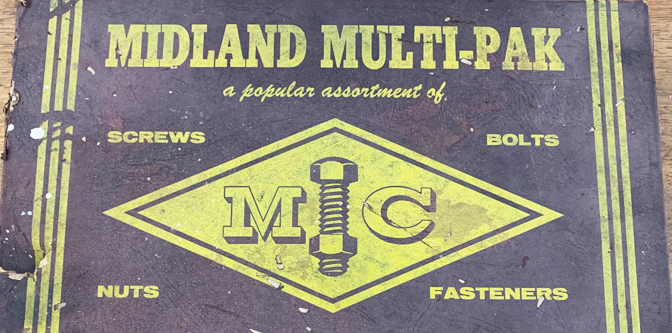Down to the Nuts & Bolts

Here in our world of traditional hot rods and custom cars, authenticity is key. Pro builders and hobbyists alike will do whatever they possibly can to create their version of an era correct machine. Some follow a loose interpretation, basing their builds on the feel of a bygone era. Others scour old scrapbooks, dig through musty magazines, and track down the men and women who lived it all those years ago. Some hot rodders study and take notes, while others are building cars just like the ones they grew up with. There’s no right or wrong way; they’re all just variations on a theme.
Anyone who has ever worked on a vintage machine has a different approach to period perfect. Does it matter when or where that ’32 Ford body was manufactured? Or how about those framerails? What about the engine? When was it made? Even if it’s old on the outside, what about the internals? Even when someone has a car that looks like it rolled right out of the little pages, we always joke around and ask if it has “vintage air” in the tires. Some laugh, others don’t.
Where do I draw the line? For me, it depends on the project. Daily drivers and budget builds get a little more slack when it comes to modern concessions. In the end, I always ask myself “Does this non-traditional component negatively affect the overall feel of the car? Is it visible?” and, most importantly, “Does it make it more functional?” My mantra is simple: the more hot rods on the road, the better. I can’t think of anyone who enjoys a non-running project more than a car that they can hop in and drive to the hamburger stand.
***
So why bring this up today? Earlier this week, I was bench racing at a friend’s shop, and we got to talking about hardware. Nuts, bolts, fasteners—you name it. We agreed that although therapeutic, trips to the hardware store can mess with your workflow and get pricey quickly. To fight those problems, they told tales of coffee cans and mason jars filled with nuts and bolts handed down through generations or found at garage sales. Five bucks for a bucket here, three for a bucket there, you get the picture.
I then thought back to my go-to source for era-correct hardware: the Midland Multi-Pak. Manufactured and distributed by the Midland Screw Corporation of Chicago, the Multi-Pak has been in my family for well over half a century. It contains a variety of screws, nuts, bolts and fasteners that are helpful for all sorts of projects. Back in 2013, I got it from my great Aunt Dosh along with an extremely nice Craftsman socket set from the same time period.
The story goes that the Multi-Pak originally belonged to my late Uncle Floyd Allen. Floyd spent most of his career in the automotive industry, working for Ford, Cars & Concepts and then a steel company. He passed away in 2012, but Dosh was glad to give the hardware to me for whatever tasks were on the horizon. That’s just how she was—always positive, enthusiastic and ever so kind. She passed away last summer.
***
No matter how big—or small—the project, I find myself turning to the Midland Multi-Pak for the right hardware. It’s traveled thousands of miles and spent time in both my and my brother’s garages. Whenever I use one of the fasteners, I feel good knowing they’re of the era and, like so many of these old components, there’s a story behind them. Now you know it.
I’ll ask you this: Do you go out of your way to use vintage hardware on your vintage machine? Or is that just one step too far? I’m interested to hear your take.
—Joey Ukrop








